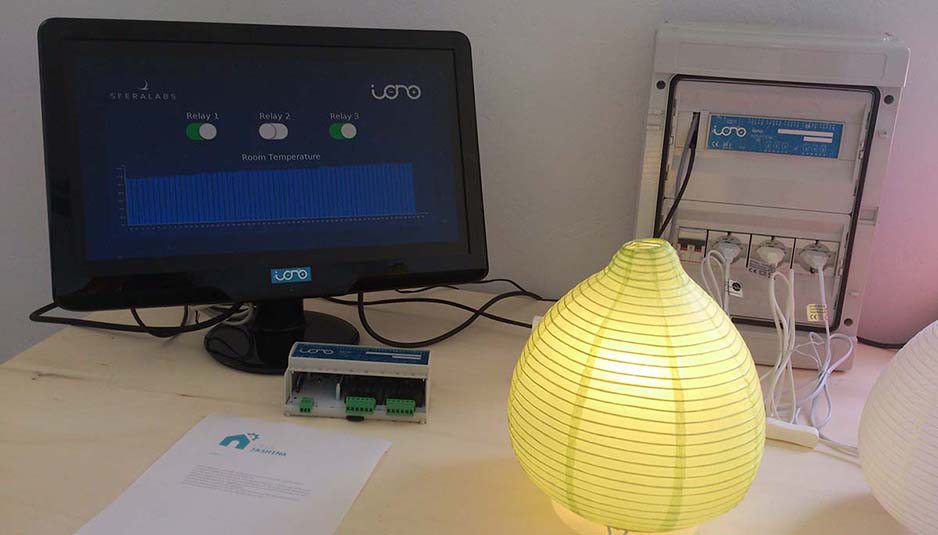House Jasmina: World’s First Smart Energy House by Arduino – Part II

Lorenzo Rubino - CuE
Presentation
Last article introduced the basic concepts of House Jasmina, a unique example of a connected apartment with open-source ideals, promoted by Arduino and curated by the futurist writer Bruce Sterling. Space of confrontation, an incubator for concepts and examples, created for design and business in the field of the Internet-of-Things (IoT). Now the description continues for the second of the three parts.
Arduino
Lorenzo Rubino – CuEIONO is a general-purpose, professional input/output DIN-rail module, CE compliant based on a standard Arduino. IONO allows using Arduino programming skills (and the vast amount of software available for it) not only for prototypes, but also for professional applications where extreme reliability, ruggedness and compliance with CE directives for EMC, Electrical Safety and RoHS are required. IONO is, basically, an Arduino-based PLC, but much more flexible and with many more resources available to develop general projects.
IONO is characterized by four multi-mode inputs and two digital inputs, six top-quality power relays, one analog output 0/10 V, DIN-rail case, robust and efficient wide-range power supply and a genuine Arduino board or any compatible boards.
IONO is available in three versions, all of them with the same main board and the same casing, with different choices for the Arduino configuration:
- IONO ETHERNET is equipped with an Arduino Ethernet R3 board
- IONO UNO features one Arduino Uno R3 SMD
- IONO SOLO does not have any Arduino board, but leaves the freedom to choose the one that is most suited to each project requirements, if compatible with the Arduino 1.0 pinout and with physical dimensions fitting the IONO casing.
Algae as Future
Lorenzo Rubino – CuEThe microalgae Spirulina is considered a healthy food that contains all of the amino acids, omega 3 and is a complete protein. Its growing rates are very fast because, like all photosynthetic mono cellular organisms and unlike more complex green organisms, close to 100% of its cells participate in the growing process. The LillyBots are a series of small-scale photo bioreactors capable to grow edible microalgae like Spirulina in domestic environment.
The technology figured in the picture works on the principle of a closed loop waterfall with a container tank at the bottom of the acrylic frame, a pump and additional electronics for control. The microalgae solution is pumped up from the tank to the top of the frame, where it begins its descent through a series of sloping planes that create a number of little waterfalls to enhance the microalgae gas exchange with air. At the end of the fall, the solution goes back to the tank and is ready for another loop. The frame is cut out of two 60×90 cm sheets of 3 mm acrylic. They designed a special MiniLilly shield for Arduino to control air temperature, water temperature and light in order to optimize the process.
I wrote another article about the possibility to use algae (and microalgae) in order to produce energy. It would be interesting develop this product in order to let every people who want to produce their own microalgae for every usage they can and want.
